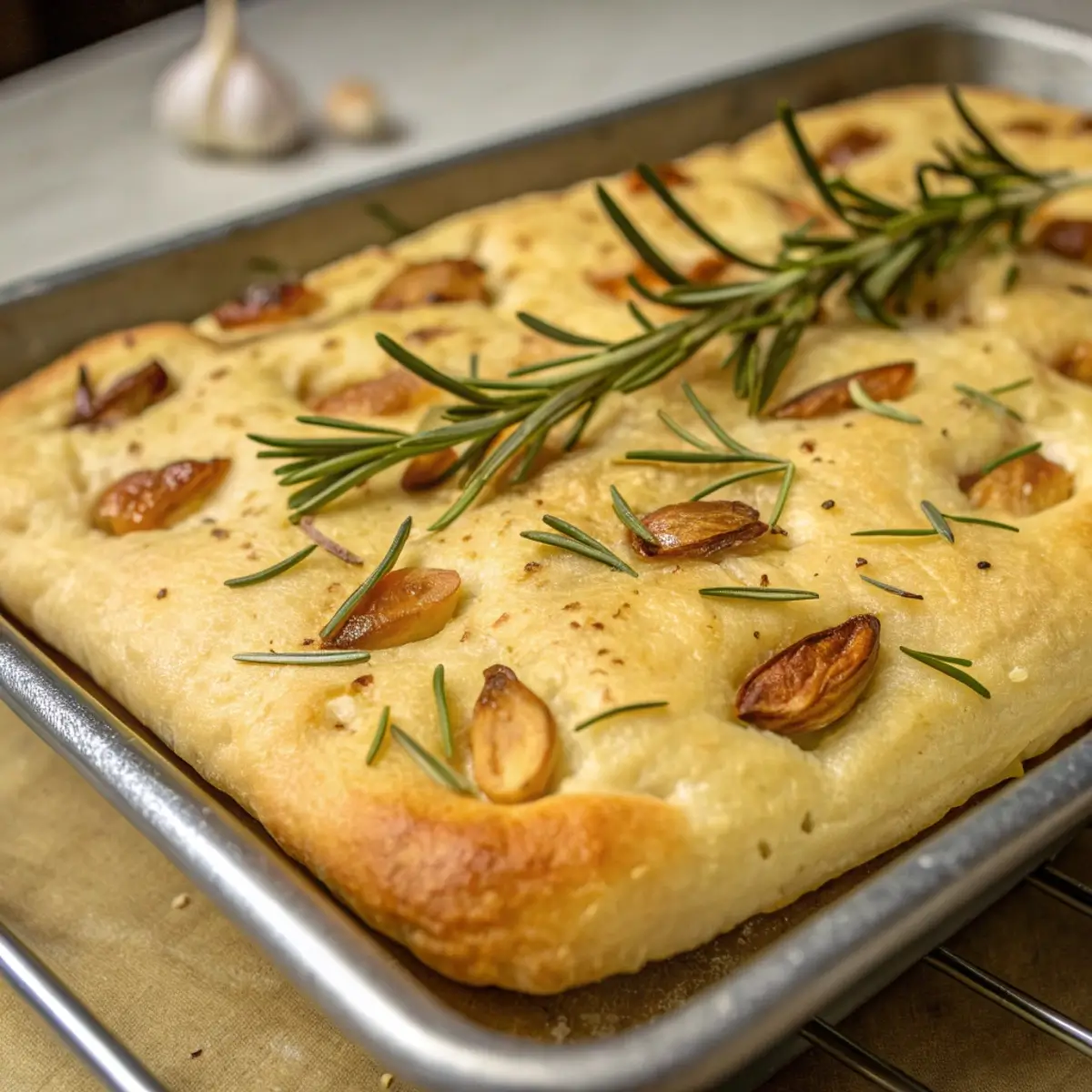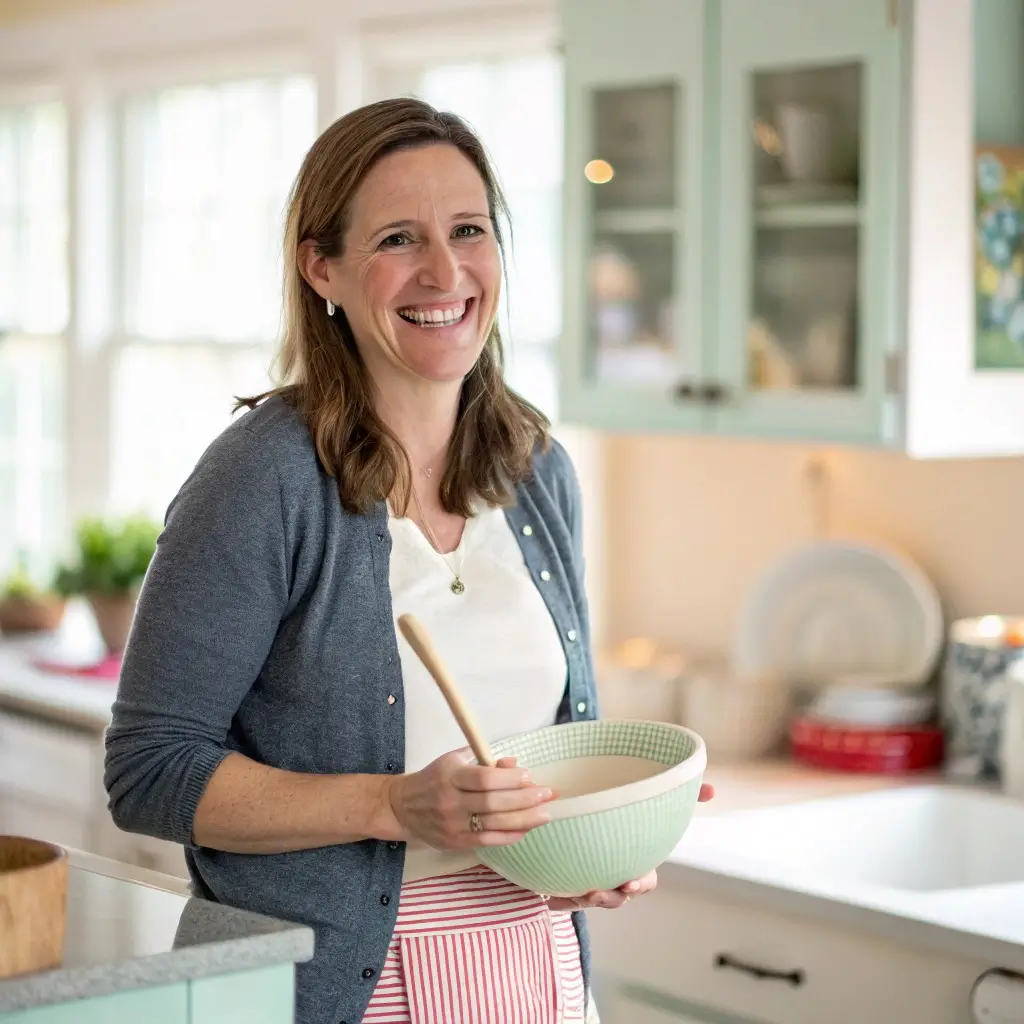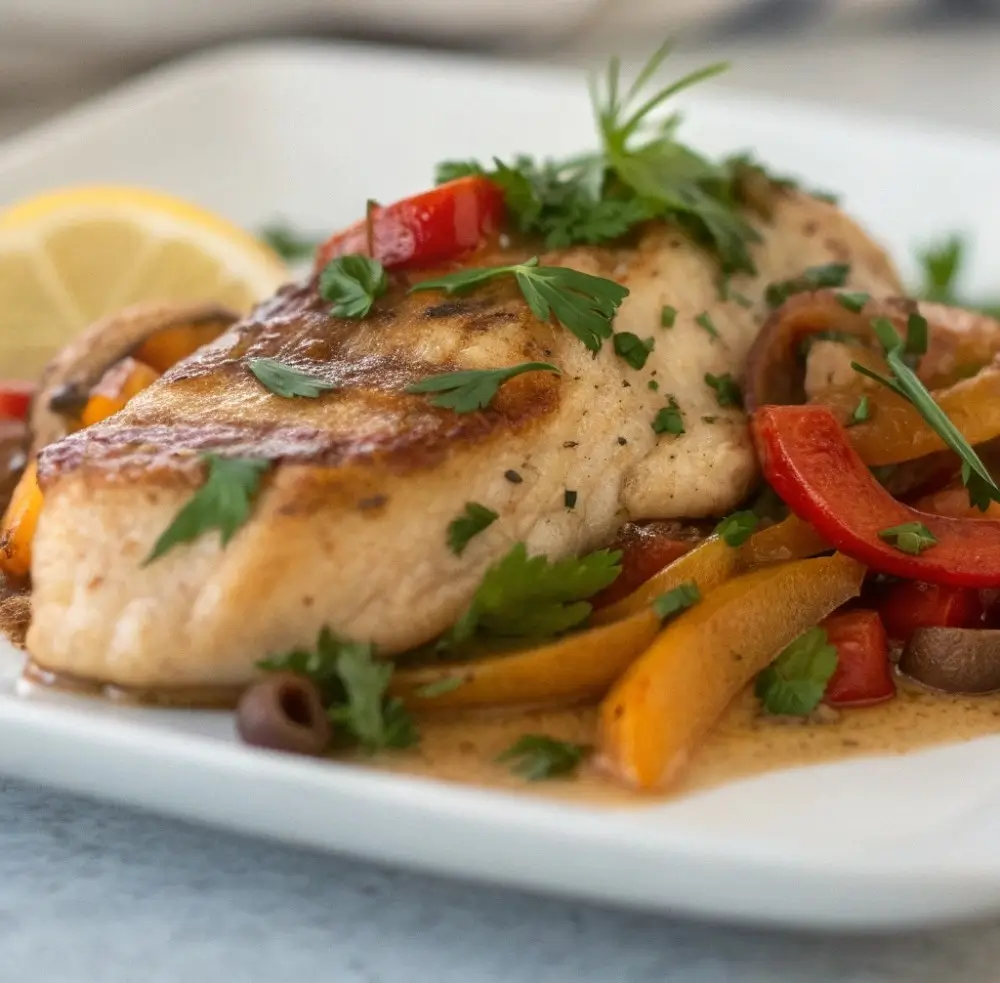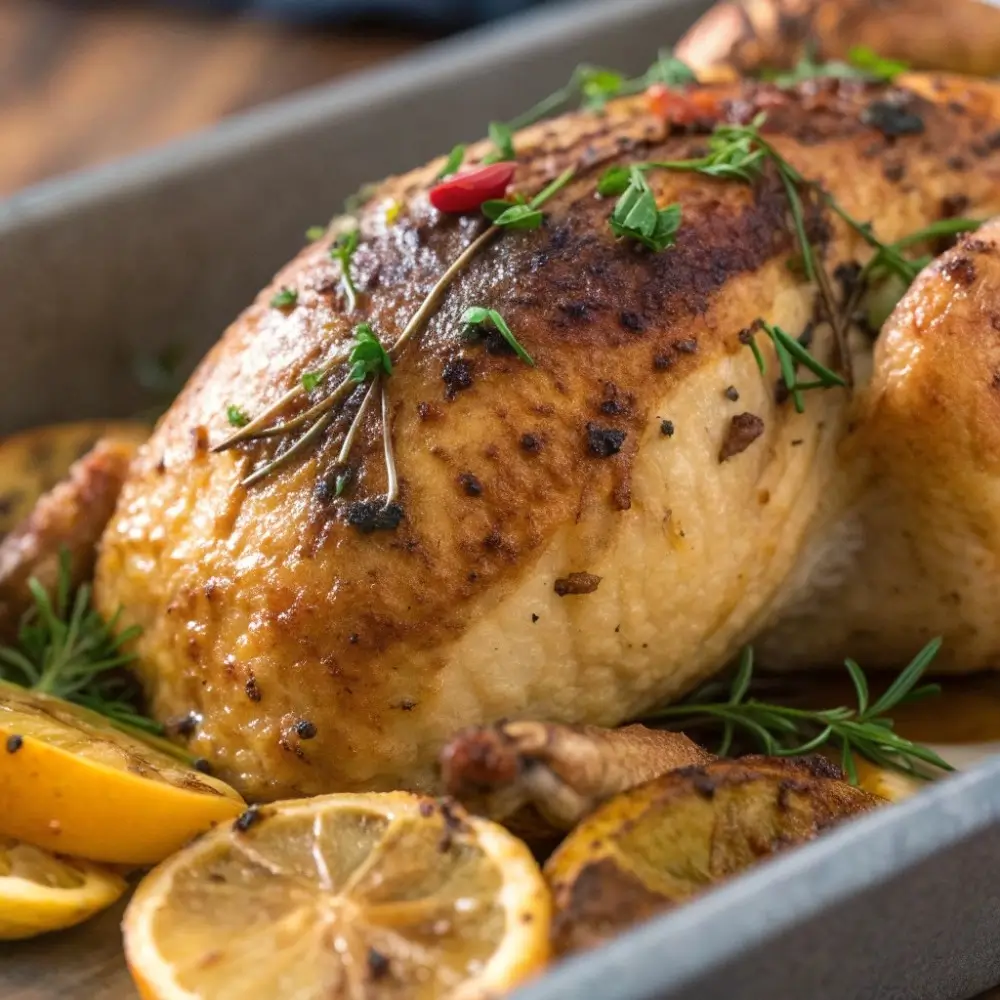There’s something magical about the aroma of freshly baked focaccia wafting through your kitchen — especially when it’s made with a tangy sourdough starter, fragrant rosemary, and roasted garlic. This Sourdough Focaccia with Rosemary and Garlic combines old-world breadmaking with modern simplicity, giving you a rustic yet elegant bread that’s as beautiful as it is delicious.
Unlike commercial yeast breads, sourdough focaccia relies on natural fermentation, which creates a chewy, airy crumb and complex flavor. The addition of rosemary and garlic infuses the bread with herbal, savory notes, while generous olive oil ensures a golden, crisp crust. Whether you serve it as a side, appetizer, or snack, this focaccia will steal the show at any meal.
Why You’ll Love This Recipe
-
Naturally leavened: No commercial yeast — just your sourdough starter for authentic, slow-fermented flavor.
-
Incredibly versatile: Pairs perfectly with soups, salads, pastas, or even as sandwich bread.
-
Beautifully textured: Crispy on the outside, soft and pillowy on the inside.
-
Infused flavor: The roasted garlic and rosemary combination elevates this focaccia to gourmet level.
-
Easy process: Simple folding and resting steps — no kneading required.
Ingredients You’ll Need
For the dough:
-
500 g (4 cups) bread flour
-
400 g (1 2/3 cups) water, at room temperature
-
100 g (1/2 cup) active bubbly sourdough starter
-
10 g (2 tsp) fine sea salt
-
30 g (2 tbsp) olive oil, plus extra for drizzling
For the topping:
-
2–3 sprigs fresh rosemary, leaves removed
-
4–5 roasted garlic cloves, roughly chopped
-
Flaky sea salt, to taste
-
Extra virgin olive oil, for drizzling
How to Roast Garlic for Focaccia
Roasted garlic adds sweet, mellow depth to this focaccia.
-
Preheat your oven to 400°F (200°C).
-
Slice the top off a head of garlic, exposing the cloves.
-
Drizzle with olive oil and wrap in foil.
-
Roast for 30–35 minutes until the cloves are soft and golden.
-
Cool, then squeeze out the roasted garlic cloves.
Use whole or gently mash them before adding to your focaccia topping.
Step-by-Step Instructions
Step 1: Mix the Dough
In a large bowl, combine water and sourdough starter. Stir until the starter dissolves. Add flour and mix with a wooden spoon or your hands until a rough dough forms. Cover and let it rest for 30 minutes (autolyse stage).
Step 2: Add Salt and Olive Oil
Sprinkle salt and drizzle olive oil over the dough. Incorporate both by pinching and folding the dough repeatedly until the ingredients are evenly distributed. The dough will be soft and slightly sticky.
Step 3: Bulk Fermentation (First Rise)
Cover the bowl with a damp towel or plastic wrap. Let it rest at room temperature (70–75°F) for 4–5 hours, performing stretch and folds every 30 minutes during the first 2 hours. This develops strength and structure.
You’ll know it’s ready when the dough has increased in size by about 50% and feels airy.
Step 4: Cold Ferment Overnight
Transfer the bowl to the refrigerator and allow the dough to ferment overnight (8–12 hours). This slow rise enhances the sourdough flavor and gives the focaccia its characteristic light texture.
Step 5: Shape and Second Rise
The next day, generously oil a 9×13-inch baking pan. Gently pour the dough into the pan, trying not to deflate it. With oiled fingertips, stretch it toward the edges. Cover loosely and let it proof at room temperature for 2–3 hours until puffy.
Step 6: Dimple and Top
Preheat the oven to 425°F (220°C). Drizzle more olive oil on top of the dough. Use your fingertips to gently dimple the surface, pressing down to create little pockets. Scatter roasted garlic pieces and rosemary leaves evenly across the dough, then sprinkle with flaky salt.
Step 7: Bake
Bake for 25–30 minutes, or until the top is golden brown and crisp. Rotate halfway through for even browning.
Step 8: Cool and Serve
Let the focaccia cool in the pan for 10 minutes before transferring it to a wire rack. Slice into squares or strips and serve warm or at room temperature.
Tips for Perfect Sourdough Focaccia
-
Use an active starter: Make sure your sourdough starter is bubbly and recently fed.
-
Hydration matters: This is a high-hydration dough, so it’s soft and sticky — use wet or oiled hands when handling.
-
Patience is key: Long fermentation gives focaccia its rich, tangy flavor.
-
Oil generously: Olive oil helps develop the golden crust and prevents sticking.
-
Don’t overtop: Too much garlic or rosemary can overpower the dough’s delicate flavor.
Flavor Variations
-
Olive & Herb Focaccia: Add sliced olives, thyme, and oregano for a Mediterranean twist.
-
Tomato Basil Focaccia: Scatter halved cherry tomatoes and basil leaves over the dough before baking.
-
Caramelized Onion & Garlic: Replace roasted garlic with caramelized onions for a deeper sweetness.
-
Cheesy Focaccia: Sprinkle grated Parmesan or mozzarella over the top before baking for a melty crust.
How to Serve Sourdough Focaccia
This focaccia is incredibly versatile. Serve it:
-
As a side with soups or stews (especially tomato or lentil soup).
-
With olive oil and balsamic vinegar for dipping.
-
Alongside pasta dishes like spaghetti or lasagna.
-
As sandwich bread — slice horizontally and fill with roasted vegetables or grilled chicken.
-
As an appetizer board base, topped with spreads, dips, and cheeses.
Storage and Reheating Tips
Room Temperature: Store in an airtight container or wrapped in foil for up to 2 days.
Refrigeration: Keep in the fridge for up to 5 days. Reheat in a 350°F oven for 10–12 minutes to refresh the texture.
Freezing: Slice into pieces, wrap tightly, and freeze for up to 2 months. Reheat directly from frozen at 375°F for 15–18 minutes.
Pro Tip: Drizzle a little olive oil before reheating to revive crispness.
Frequently Asked Questions
Can I skip the overnight fermentation?
While you can shorten the rise, the overnight rest enhances both flavor and texture. For best results, don’t skip it.
What if my starter isn’t very strong?
You can add a pinch of commercial yeast to the dough for a more predictable rise without compromising sourdough flavor.
Can I use all-purpose flour instead of bread flour?
Yes, but the bread flour gives better gluten strength and structure. If using all-purpose flour, reduce water slightly.
Can I add more toppings?
Absolutely. Try sun-dried tomatoes, sliced onions, or mixed herbs. Just be mindful of adding too much moisture.
How do I know it’s baked through?
Your focaccia should sound hollow when tapped on the bottom and have a deep golden-brown crust.
Why Sourdough Makes a Difference
Sourdough fermentation isn’t just about flavor — it’s about texture and digestibility. The natural yeast and bacteria in your starter break down gluten and starches, making the bread easier to digest. It also gives that unmistakable tang that pairs perfectly with the richness of olive oil and the savoriness of rosemary and garlic.
Each bite of sourdough focaccia has layers of flavor: a crisp olive-oil crust, airy crumb, and aromatic toppings. It’s rustic perfection in every sense.
Final Thoughts
This Sourdough Focaccia with Rosemary and Garlic is more than a recipe — it’s an experience. From the slow, therapeutic process of folding and fermenting to the moment you press your fingers into the puffy dough before baking, it’s a bread that invites mindfulness and creativity.
The result is a bakery-quality focaccia with a crackling crust, tender crumb, and rich aroma of roasted garlic and herbs. Whether you’re hosting a holiday dinner, preparing a weekend feast, or simply indulging in homemade comfort food, this focaccia will impress every time.
Bake it once, and it will become your go-to sourdough bread — timeless, fragrant, and utterly delicious.





